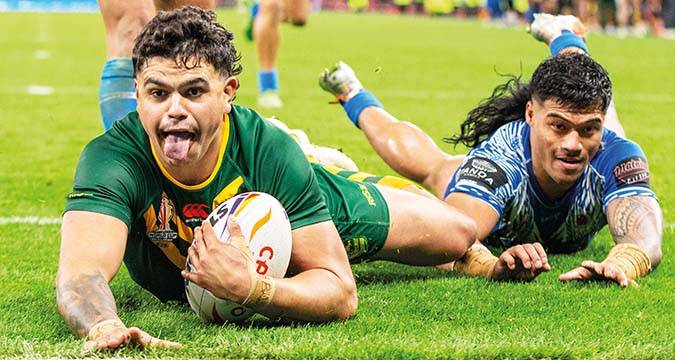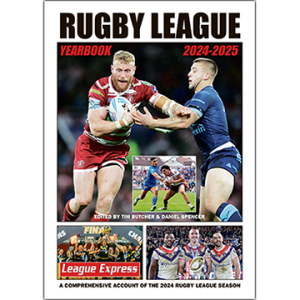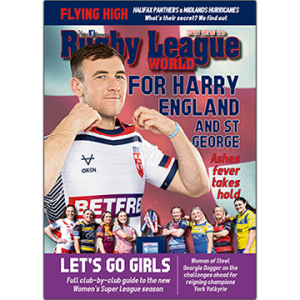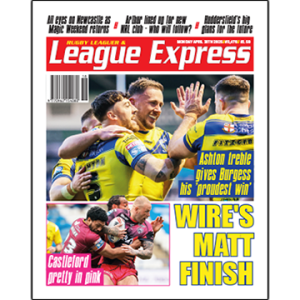
League Express editor MARTYN SADLER ponders the lessons of the Rugby League World Cup
THERE are plenty of debates to be had about whether the Kangaroos are better or worse than some of their predecessors.
Could they have beaten the 1982 or 1986 touring Kangaroos, both of whom went home unbeaten, for example?
Those sort of questions are always great debating points but unfortunately, they will never be resolved.
However, the truth is, that the Kangaroos we saw on Saturday are better conditioned, mentally, physically and in terms of their skill levels, than any of their predecessors.
With the advance of sports science and its impact on training regimes, it could hardly be otherwise, so we had better accept that we were watching the very pinnacle of our sport when we saw the Aussies gradually dismantle the gallant Samoans on Saturday to win by 20 points.
I went to Old Trafford hoping for a close game but fearing a blowout. And I came away knowing that my hopes hadn’t been realised, but neither had my fears.
The Samoans were competitive enough to provide us with a fine spectacle, even if there was very little chance that they would overcome the Australians. They played well enough to ensure that their fellow countrymen would be out on the streets of Apia, the Samoan capital, as well as in Auckland and western Sydney, where they were genuinely able to celebrate the fact that getting to the World Cup Final had in itself been a defining nation for the descendants of a small nation in the South Pacific.
And they might have done even better if things had gone their way.
Early in the game there was a glaring mistake made by a touch judge, who didn’t call a 40/20 when a long kick by Chanel Harris-Tavita was knocked back infield by James Tedesco, with replays on the big screen showing that the Australian captain’s foot had been on the line and the Samoans should have got the ball back in an attacking position. That was a bad mistake by the officials.
Then there was the incident when Harris-Tavita was taken out by an elbow to the head from Angus Crichton early in the second half, at a point when the Aussies were 14-0 ahead.
That looked to me like an automatic red card and I fully sympathised with the reaction of the Samoan coach Matt Parish after the match, as he lamented the “weak” decision to issue a yellow card rather than a red one. I found Mal Meninga’s contention that Crichton shouldn’t have been sent off the field at all totally perplexing.
Crichton was subsequently suspended for two matches, which he is appealing, but that does suggest that he should have been shown a red card.
Having said all that, if those two decisions had gone Samoa’s way, it is still highly unlikely that they would have defeated the Australians although they might have made it closer.
In the tournament prior to Saturday’s final, some of the major Australian stars had failed to reach their full potential, causing them not to be included in the shortlist for this year’s Golden Boot award.
I’m thinking of three in particular – James Tedesco, Latrell Mitchell and Nathan Cleary. It’s not that they had played badly in their previous matches. It’s just that we have such high expectations of them that when they don’t stand out, we notice that they haven’t been at the top of their game.
Unfortunately for the Samoans, however, there is a truth in sport generally that the greatest stars tend to shine on the biggest stages.
And so we saw Mitchell and Tedesco score two tries each, while Cleary had a massive influence in the middle of the field. It was almost inevitable that they would do so.
Tedesco was voted the player of the match and it seemed very odd to reflect on the fact that the Golden Boot had been awarded before the World Cup Final in both the men’s and women’s games, even though Joey Manu and Raecene McGregor, both of New Zealand, were no doubt very worthy winners.
Ali Brigginshaw was the player of the match in the Women’s World Cup Final as the Jillaroos blitzed the Kiwi Ferns. It was her second successive player of the match award in a World Cup Final and she is surely the outstanding female Rugby League player of this or any other generation.
We can say that confidently because the women’s game, compared to the men’s, has a relatively short history.
Among those who joined them in their dressing room were the three Samoa-eligible players in the Kangaroos squad; Tino Fa’asuamaleaui, Jeremiah Nanai and Murray Taulagi, further illustrating how strong this side could be in the future.
It was a wonderful day on Saturday and I was delighted to see a crowd of 67,502 there to see it.
It looked and felt like the wonderful occasion that it was, with the arrival of Kevin Sinfield at half-time and the coming together of all three World Cup winners at the end allowing us to head out into the cold night air from Old Trafford with a wonderfully warm feeling on Saturday night.
But what will happen now?
When will Australia play again and will they continue to dominate when they do play?
No one is sure when we will see the Kangaroos take to the field again, but the question of whether they will continue to dominate is surprisingly less certain.
After the game on Saturday the Samoans were joined in their dressing room by three Samoa-eligible players in the Kangaroos squad – Tino Fa’asuamaleaui, Jeremiah Nanai and Murray Taulagi.
What would have happened if they had chosen to play for Samoa in this World Cup and what would happen if they opted for Samoa in future?
To some degree the future of international Rugby League depends on the answers to those questions.
The Australians would be wise not to take the 2025 World Cup in France for granted.
MARTYN SADLER writes his weekly column, ‘Talking Rugby League’, every week in League Express.
You can take out a subscription to League Express, either print or digital, by going here.




